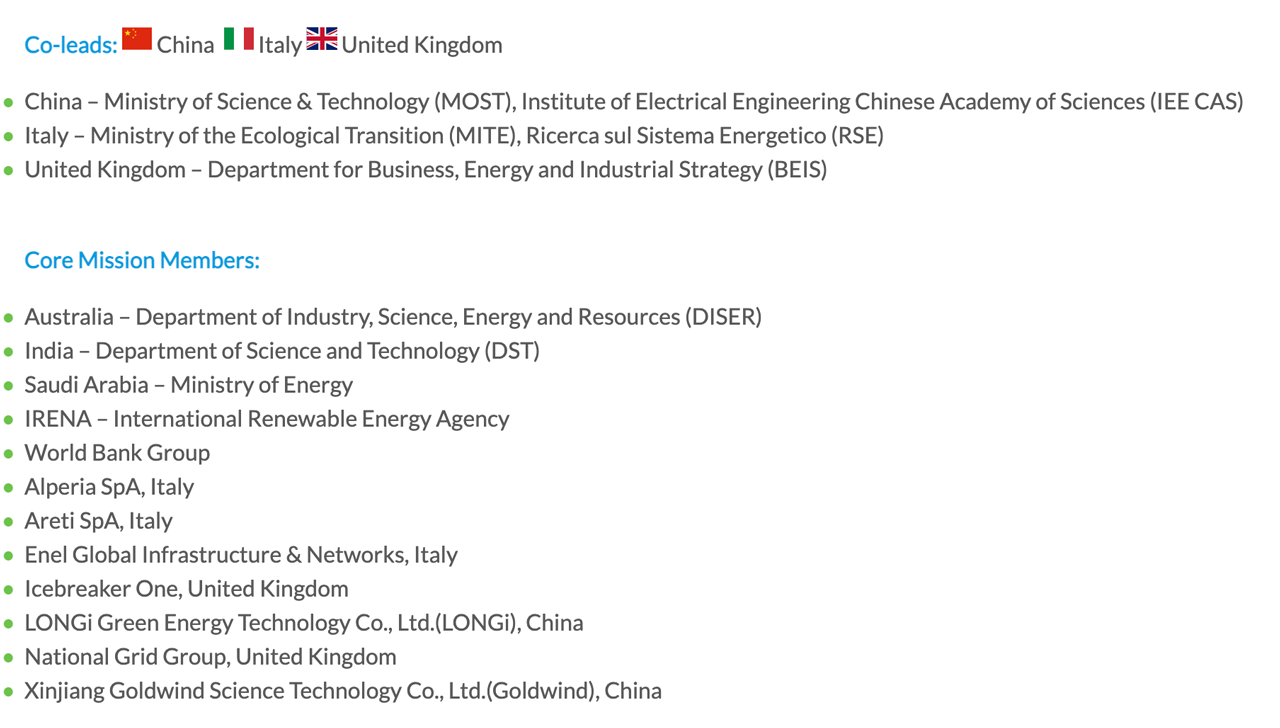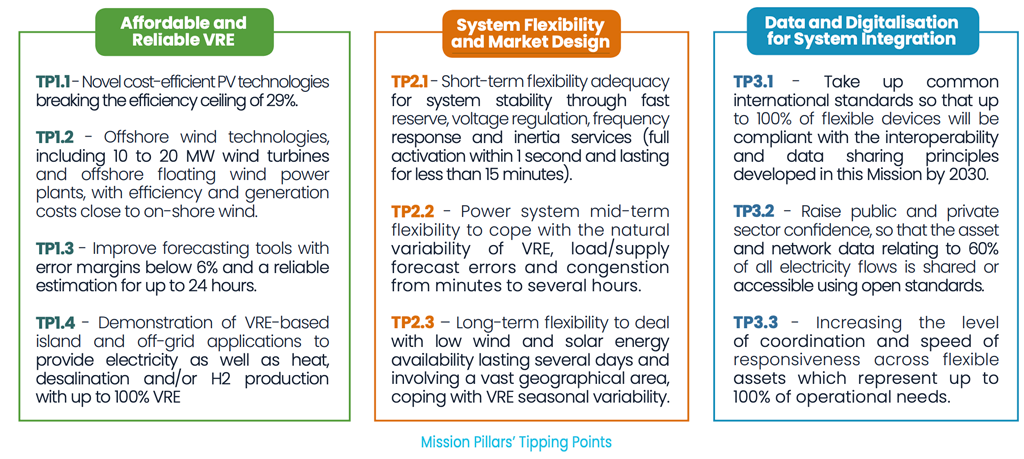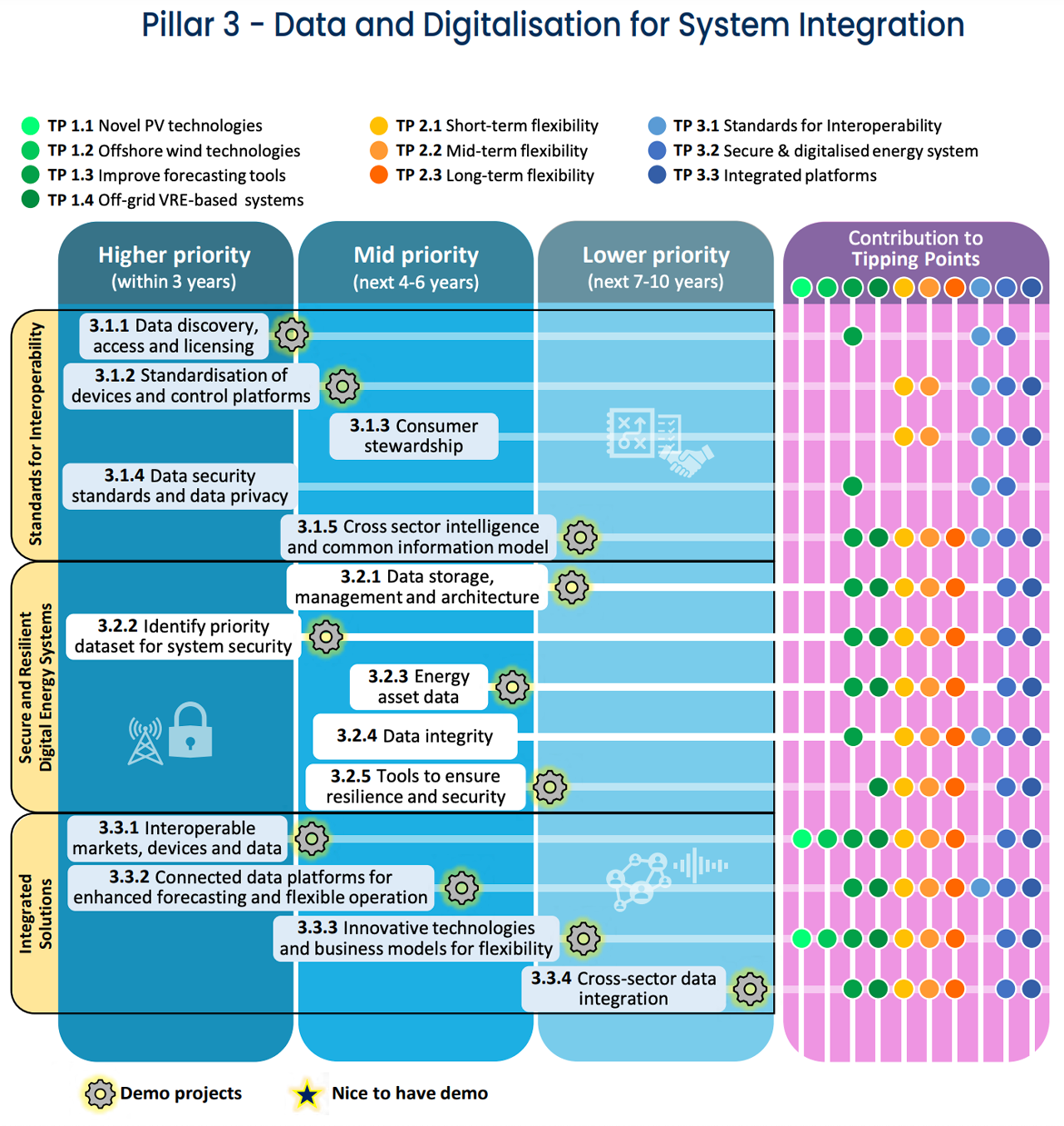
Full report download (PDF) launched at COP26. Official website: http://mission-innovation.net/missions/power/
Icebreaker One is a core mission member, with Open Energy as a lead initiative.


Executive Summary
Emissions from the power sector need to fall dramatically in the next decade to achieve global climate goals. This leads power systems worldwide to face unprecedented challenges, including how to achieve mass-scale integration of variable renewable energies (VRE), such as wind and solar.
Despite being the lowest cost form of generation in many regions, VRE currently still meets a small fraction of current global energy demand. In part, this is due to challenges caused by their intermittent nature, which can jeopardise the security and reliability of power systems with the present level of flexibility.
These challenges need to be overcome, since without a major acceleration in clean electricity innovation, we will not meet the net zero target by 2050. The Green Powered Future Mission has the goal of demonstrating that power systems, regardless of geography or climates, can effectively integrate up to 100% VRE in their generation mix by 2030 while ensuring the system is cost-efficient, secure and resilient.
The Mission is a 10-year endeavour which will accelerate innovation in clean energy by demonstrating innovative solutions to transform the present system. It is based on the model of a public-private partnership, an effective way to bring together the resources and the know-how that are needed to address innovations through the support of Mission Innovation (MI) member states, private sector companies and international organisations.
The Green Powered Future Mission will lead the way in Research and Innovation (R&I) towards the global power system transformation to making the clean energy revolution happen in this decade. This Mission, also leveraging synergies with other key initiatives, addresses the following three R&I pillars of energy systems transformation:
- Affordable and Reliable VRE: reduce cost and increase efficiency, resilience and reliability of VRE technologies in various climates and system configurations.
- System Flexibility and Market Design: develop the much-needed flexible solutions to meet network infrastructure needs, to be supported by regulation and innovative markets design.
- Data and Digitalisation for System Integration: accelerate the digitalisation of energy systems through development of interoperable data exchange and effective system integration to unlock the full value of VRE.
The Mission has identified key Tipping Points (TP) against each pillar which need to be met to achieve its goal.

Pillar 3 Data and Digitalisation for System Integration
Led by the UK, this pillar will deal with digitalisation that has the potential to revolutionise the energy sector. It can optimise the use of networks and generation sources, support the coupling of different energy vectors and foster a faster electrification of end uses adding up flexibility from the demand side.
By 2030, this Mission will accelerate the digitalisation of energy systems, by supporting globally applicable, flexible and adaptive architectures for interoperable data exchange and effective system integration that can unlock the full value of renewables.
Tipping points to be reached are:
TP3.1 – Standards for Interoperability: enough innovators and providers of smart technology take up common international standards so that up to 100% of flexible devices will be compliant with the interoperability and data sharing principles developed in this Mission by 2030.
TP3.2 – Secure and resilient digital energy systems: the 2030 power system will be secure enough such that the procedures introduced will raise public and private sector confidence, so that the asset and network data relating to 60% of all electricity flows is shared or accessible using open standards.
TP3.3 – Integrated solutions: Improving operational control and contingency planning by increasing the level of coordination and speed of responsiveness across flexible assets providing balancing or ancillary services which represent up to 100% of operational needs through the integration of platforms and sectors (vectors) supported through this Mission


